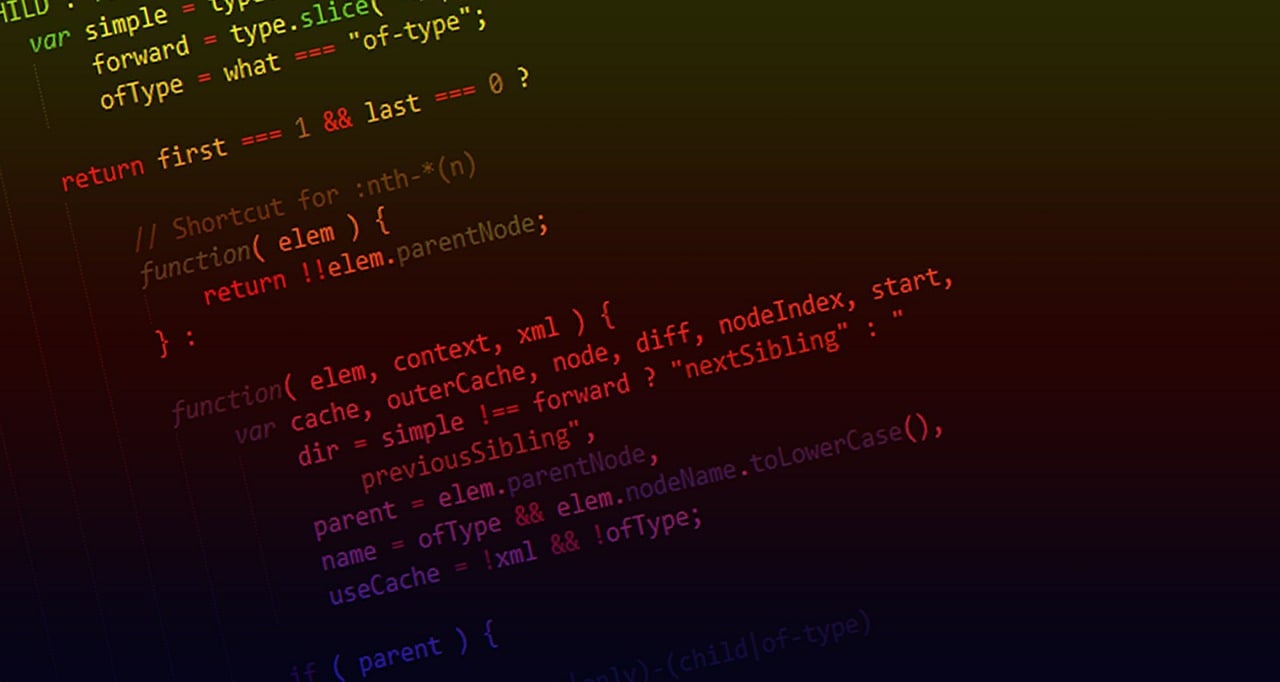In today’s web-centric world, optimizing JavaScript performance is crucial for creating fast, responsive, and user-friendly applications. As websites and web apps become increasingly complex, the need for efficient JavaScript execution has never been more critical. By implementing performance optimization techniques, developers can significantly improve load times, reduce resource consumption, and enhance overall user experience. This article delves into various strategies and best practices for optimizing JavaScript performance, covering everything from DOM manipulation to code organization and execution.
Minimize DOM Access
Interactions between JavaScript and the Document Object Model (DOM) can be computationally expensive, often leading to performance bottlenecks. By minimizing DOM access, developers can dramatically improve their application’s speed and responsiveness.
Use Pointer References
Storing pointer references to DOM elements during their creation can substantially reduce the need for repeated lookups, thus enhancing performance.
Optimization strategies for using pointer references:
- Cache DOM element references in variables
- Use querySelector and querySelectorAll for efficient element selection
- Avoid repetitive DOM traversals by storing parent or container elements
- Utilize DocumentFragment for batch insertions
- Implement virtual DOM techniques for complex UI updates
Batch DOM Changes
Batching DOM updates and making multiple changes at once prevents unnecessary reflows and repaints, leading to improved performance.
Steps to implement batched DOM changes:
- Detach the DOM element from the live DOM
- Make all necessary changes to the detached element
- Reattach the modified element back to the live DOM
- Use requestAnimationFrame for smoother animations and updates
- Employ CSS classes for bulk style changes instead of inline styles
| Technique | Description | Performance Impact |
|---|---|---|
| Pointer References | Store DOM element references | Reduces DOM queries |
| Batched Updates | Group multiple DOM changes | Minimizes reflows and repaints |
| Virtual DOM | Use a lightweight copy of the DOM | Optimizes rendering cycles |
Reduce JavaScript Payload Size
Minimizing the size of JavaScript files is crucial for faster load times and improved application responsiveness.
Code Minification and Compression
Utilizing tools for code minification and compression can significantly reduce file sizes, leading to faster downloads and parsing.
- UglifyJS: A popular JavaScript parser, minifier, and compressor
- Terser: A JavaScript parser and mangler/compressor toolkit
- GZip: A file compression program that reduces file sizes for faster transfers
- Brotli: A newer compression algorithm that often outperforms GZip
Code Splitting
Code splitting involves breaking down large JavaScript bundles into smaller, more manageable chunks. This technique allows for loading critical resources first, improving initial load times and overall performance.
Benefits of code splitting:
- Faster initial page loads
- Improved caching efficiency
- Reduced memory usage
- Better performance on mobile devices
- Easier code maintenance and updates
Optimize Asynchronous JavaScript Execution

Improving how and when JavaScript is executed can have a significant impact on perceived performance and user experience.
Defer and Async Attributes
Using the defer and async attributes allows the browser to parse HTML without waiting for JavaScript to load and execute.
<!– Defer attribute –>
<script src=”non-critical.js” defer></script>
<!– Async attribute –>
<script src=”analytics.js” async></script>
The defer attribute ensures the script is executed after the HTML is fully parsed, while async allows the script to be downloaded asynchronously and executed as soon as it’s available.
Use Web Workers for Heavy Tasks
Web Workers enable the offloading of computationally intensive tasks to background threads, keeping the main thread responsive for user interactions.
Example of implementing a Web Worker:
// Main thread
const worker = new Worker(‘heavy-calculation.js’);
worker.onmessage = function(event) {
console.log(‘Result from Web Worker:’, event.data);
};
worker.postMessage({ data: complexDataSet });
// heavy-calculation.js (Web Worker)
self.onmessage = function(event) {
const result = performHeavyCalculation(event.data);
self.postMessage(result);
};
Limit External Dependencies
Excessive reliance on external libraries can significantly impact JavaScript performance. By leveraging native browser features and carefully selecting dependencies, developers can optimize their applications.
Use Native Browser Features
Modern browsers offer a wide range of built-in functionality that can replace JavaScript-heavy libraries:
- Form validation using HTML5 attributes
- CSS animations and transitions
- localStorage and sessionStorage for client-side data storage
- Fetch API for making HTTP requests
- IntersectionObserver for lazy loading and infinite scrolling
- WebSockets for real-time communication
Reduce JavaScript Library Use
Limiting the use of large JavaScript libraries in favor of smaller, targeted solutions can lead to significant performance improvements.
| Library | Size (minified) | Alternative | Size (minified) |
|---|---|---|---|
| jQuery | 87 KB | Vanilla JS | 0 KB |
| Moment.js | 232 KB | Day.js | 2 KB |
| Lodash | 69 KB | Native methods | 0 KB |
| Bootstrap JS | 58 KB | Custom components | Variable |
Improve Event Handling

Optimizing event handling ensures smoother interactions and faster performance in JavaScript applications.
Debounce and Throttle Techniques
Debouncing and throttling are techniques used to control how many times we allow a function to be executed over time.
// Debounce function
function debounce(func, delay) {
let timeoutId;
return function (…args) {
clearTimeout(timeoutId);
timeoutId = setTimeout(() => func.apply(this, args), delay);
};
}
// Throttle function
function throttle(func, limit) {
let inThrottle;
return function (…args) {
if (!inThrottle) {
func.apply(this, args);
inThrottle = true;
setTimeout(() => inThrottle = false, limit);
}
};
}
// Usage
window.addEventListener(‘resize’, debounce(() => {
console.log(‘Resized’);
}, 250));
window.addEventListener(‘scroll’, throttle(() => {
console.log(‘Scrolled’);
}, 100));
Optimize Event Listeners
Efficient event listener management is crucial for maintaining optimal performance.
Best practices for event listeners:
- Use event delegation for dynamically added elements
- Remove event listeners when they’re no longer needed
- Avoid inline event handlers in HTML
- Utilize passive event listeners for scroll performance
- Batch event handler updates in animation frames
Lazy Load Assets
Implementing lazy loading techniques can significantly improve initial page load times and overall performance.
Lazy Load Images
Using the Intersection Observer API to implement lazy loading for images:
const images = document.querySelectorAll(‘img[data-src]’);
const config = {
rootMargin: ‘0px 0px 50px 0px’,
threshold: 0
};
let observer = new IntersectionObserver((entries, self) => {
entries.forEach(entry => {
if (entry.isIntersecting) {
preloadImage(entry.target);
self.unobserve(entry.target);
}
});
}, config);
images.forEach(image => {
observer.observe(image);
});
function preloadImage(img) {
const src = img.getAttribute(‘data-src’);
if (!src) return;
img.src = src;
}
Defer Non-Essential JavaScript
Deferring the loading of non-critical JavaScript until after the page has loaded can enhance initial rendering performance. This can be achieved by:
- Using the defer attribute for script tags
- Implementing dynamic script loading based on user interactions
- Utilizing module bundlers to create separate bundles for critical and non-critical code
Conclusion
Optimizing JavaScript performance is an ongoing process that requires attention to detail and a deep understanding of how browsers interpret and execute code. By implementing the techniques discussed in this article, such as minimizing DOM access, reducing payload size, optimizing asynchronous execution, limiting dependencies, improving event handling, and lazy loading assets, developers can create faster, more efficient web applications. These optimizations not only improve user experience but also contribute to better search engine rankings and increased engagement. As web technologies continue to evolve, staying updated with the latest performance optimization strategies will remain crucial for building high-quality, responsive web applications.




